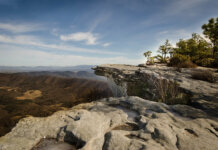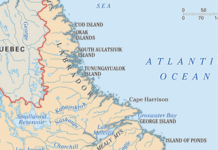The National Renewable Energy Laboratory (NREL) has released two new databases of state and local wind and solar energy zoning laws and ordinances in the United States. The data sets are machine-readable, so geospatial analysts and researchers can readily analyze siting impacts. This work is part of ongoing research at NREL to explore the dynamics of land use and clean energy deployment.
Previous NREL research has found that total U.S. wind energy technical potential is seven times greater under the least restrictive siting regimes as compared to the most restrictive siting regimes. State and local zoning laws and ordinances influence how and where wind and solar energy projects can be sited and deployed – which can have a measurable impact on U.S. renewable energy resource potential.
As the United States targets 100% clean electricity by 2035 and a net-zero carbon economy by 2050, local siting constraints have become a critical topic. However, publicly available data on state and local wind energy and solar power ordinances have not been available in one place.
“Our new, high-resolution data sets are tools that can help us better understand the complex interactions between siting considerations and large-scale clean energy development,” says Anthony Lopez, NREL’s senior geospatial data scientist and project lead for the new data sets. “The data can inform discussions about balancing local clean energy deployment decisions with mitigating global climate change.”
NREL released two data sets: one including nearly 2,000 U.S. wind energy zoning ordinances and another including nearly 1,000 solar energy ordinances at the state, county, township and city levels. Both data sets are formatted as downloadable spreadsheets and accompanied by interactive maps, illustrating the wind and solar energy zoning ordinance data by location and ordinance type.
The wind energy database includes setbacks – or the required boundaries around infrastructure where wind turbines cannot be installed – for property lines, buildings, roads, railroads, electric transmission lines and bodies of water. Because setbacks are influenced by wind turbine tip heights – the taller the turbine, the larger the setback – the data set also includes height and rotor size restrictions. Other ordinances, like noise limitations, shadow flicker limits, and utility-scale wind bans or moratoriums, are also included.
Similarly, the solar energy database includes setbacks for property lines, buildings, roads and water, as well as height restrictions, minimum and maximum lot sizes, solar power development bans or moratoriums, and more.
The two data sets join a suite of NREL-developed renewable energy supply curves, which characterize the quantity and quality of renewable resources. NREL develops and disseminates the foundational data to the research community to serve as the basis for a variety of analysis and modeling applications. The supply curves can be used to assess land availability for renewable energy projects, considering their intersection with the built and natural environment.
“Energy modelers, wind and solar energy technology engineers, land-use experts, ecologists, social scientists, and more, can use the new data to understand how other land uses may impact large-scale clean energy deployment,” states Trieu Mai, NREL’s senior energy analyst. “It can be used in modeling and analysis to assess trade-offs between emissions, costs, plant design, land use, wildlife habitat and more.”
Lopez and Mai first started thinking about the impact of land use restrictions on clean energy deployment, specifically for wind energy, about a decade ago. It was not a major topic of research at the time, but they believed it was a critical question that would need to be addressed.
Lopez and team have fine-tuned the spatial resolution of wind and solar energy technical potential assessments to account for 124 million buildings and every road, railway, transmission line and radar tower in the United States.
Lopez and team have conducted several studies on land use dynamics of clean energy deployment, including a recent analysis of land area requirements and land use intensity of U.S. wind energy deployments from 2000 to 2020 – finding that the total U.S. wind energy footprint is equivalent to the size of New Hampshire and Vermont combined. However, only a small fraction of that area (<1%–4%) is estimated to be directly impacted or permanently occupied by physical wind energy infrastructure.
Land use for solar development is also an active area of research, including recent projections of solar land use from the Solar Futures Study. Results show there is more than enough land available to support solar development in every studied future scenario. At the highest deployment level in 2050, ground-based solar technologies require a land area equal to 0.5% of the United States, which could be met with less than 10% of potentially suitable disturbed lands. However, solar installations will affect local communities, ecosystems, and agricultural areas.
“There are still a lot of questions that need to be studied,” Lopez adds. “National clean energy goals will happen at the local level. We will continue to drill down our resolution and analyze different aspects of the interactions between land use and clean energy deployment.”
The work is funded by the U.S. Department of Energy’s Solar Energy Technologies Office and Wind Energy Technologies Office.




